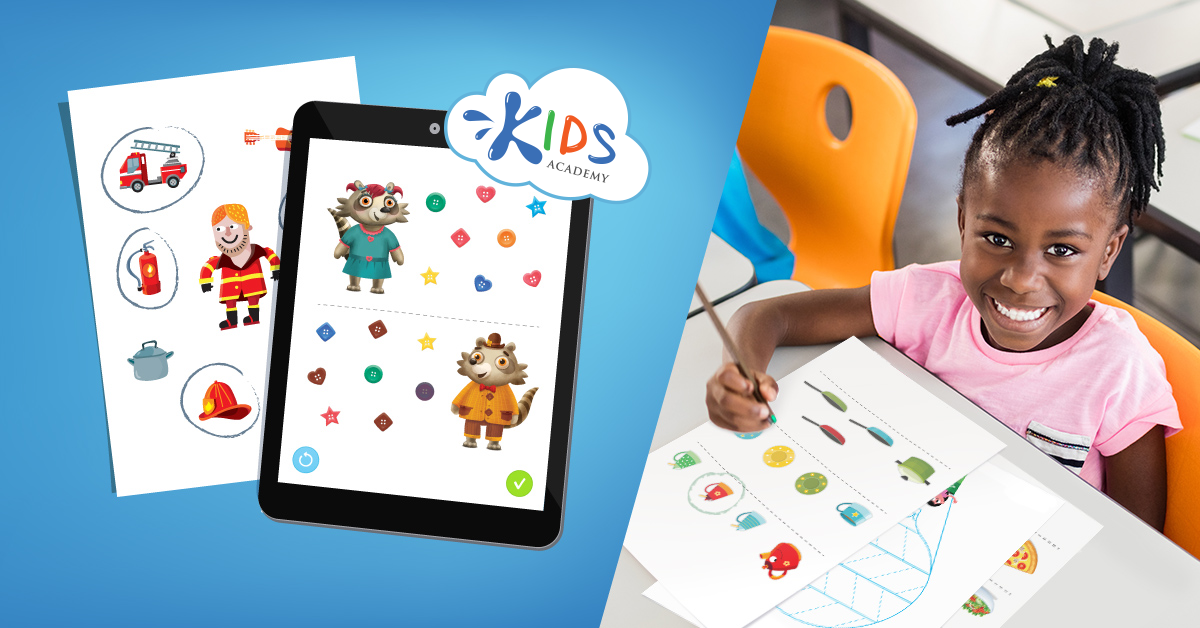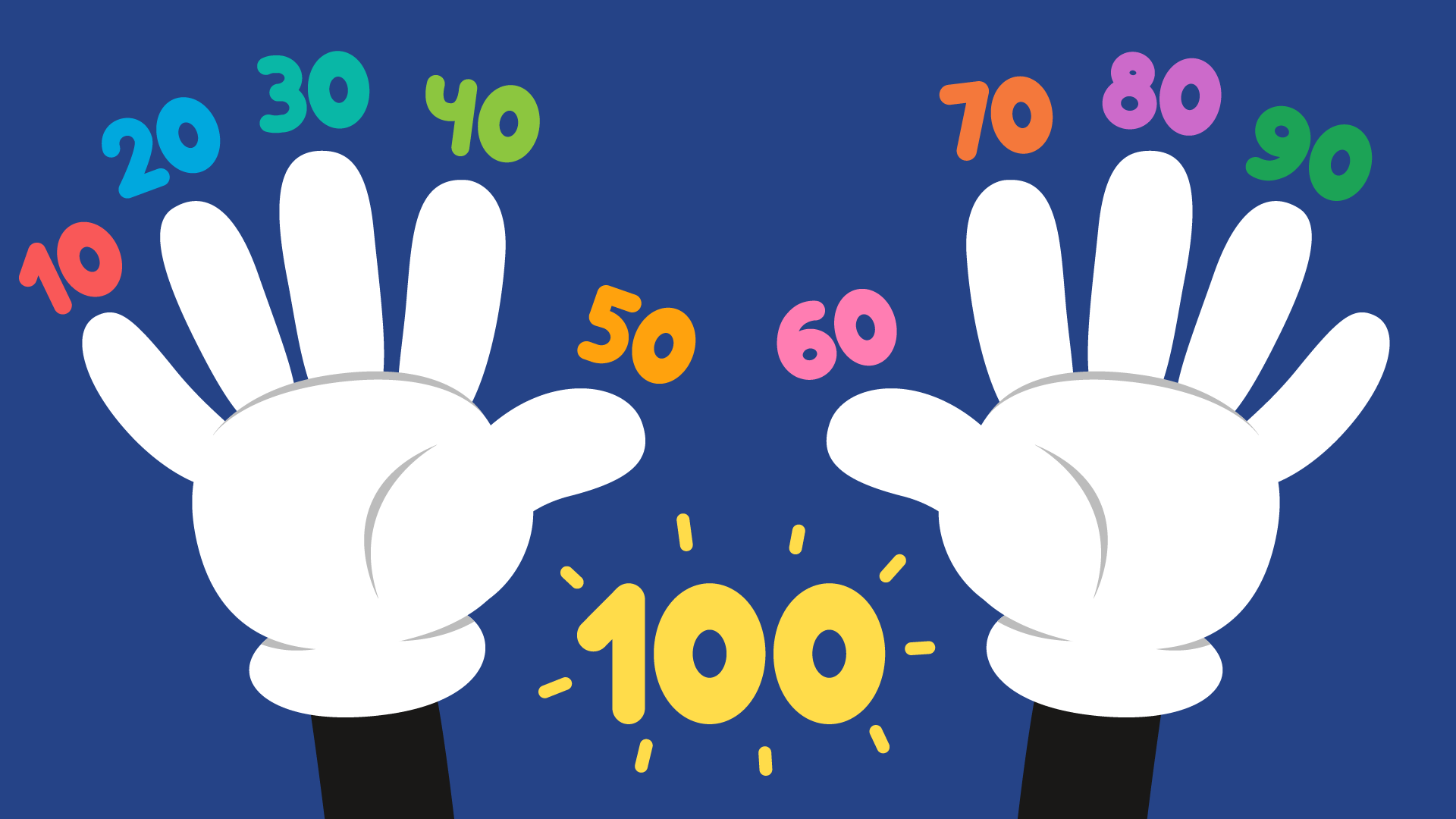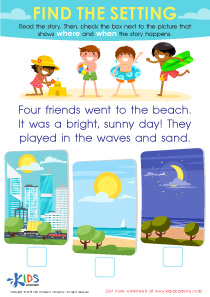Visual discrimination Easy Worksheets for Ages 3-5
3 filtered results
-
From - To
Enhance your child's visual discrimination skills with our Easy Worksheets for Ages 3-5! Designed specifically for young learners, these engaging worksheets help differentiate similar shapes, colors, and patterns, building essential cognitive skills. Each activity emphasizes fun and interactive learning, perfect for classrooms or home use. Our colorful and stimulating designs capture children's interest while encouraging focus and attention to detail. These worksheets not only aid in recognizing differences but also support overall development in critical thinking and problem-solving. Ignite a love for learning early on with our delightful visual discrimination resources, fostering skills that set a strong foundation for future educational success!
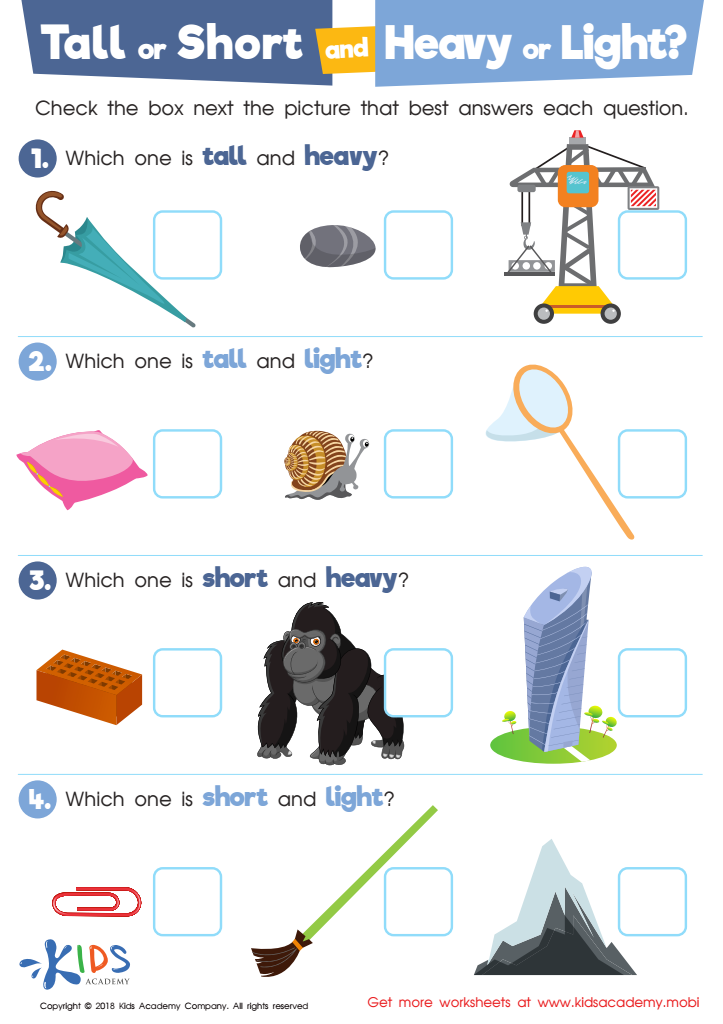

Tall or Short and Heavy or Light? Worksheet
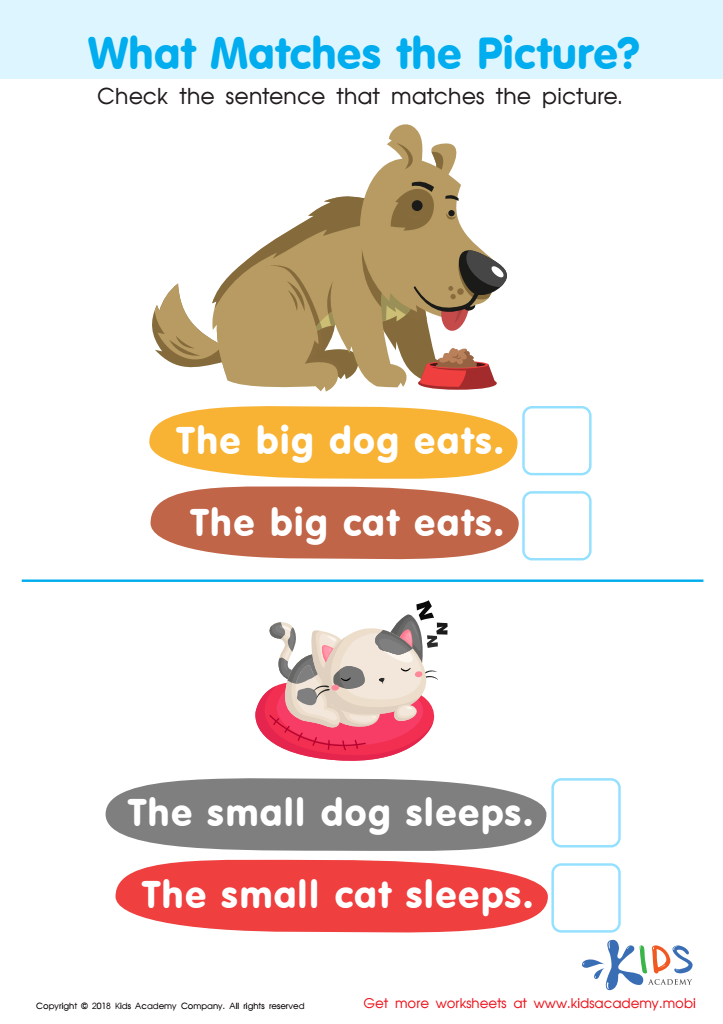

What Matches the Picture? Worksheet
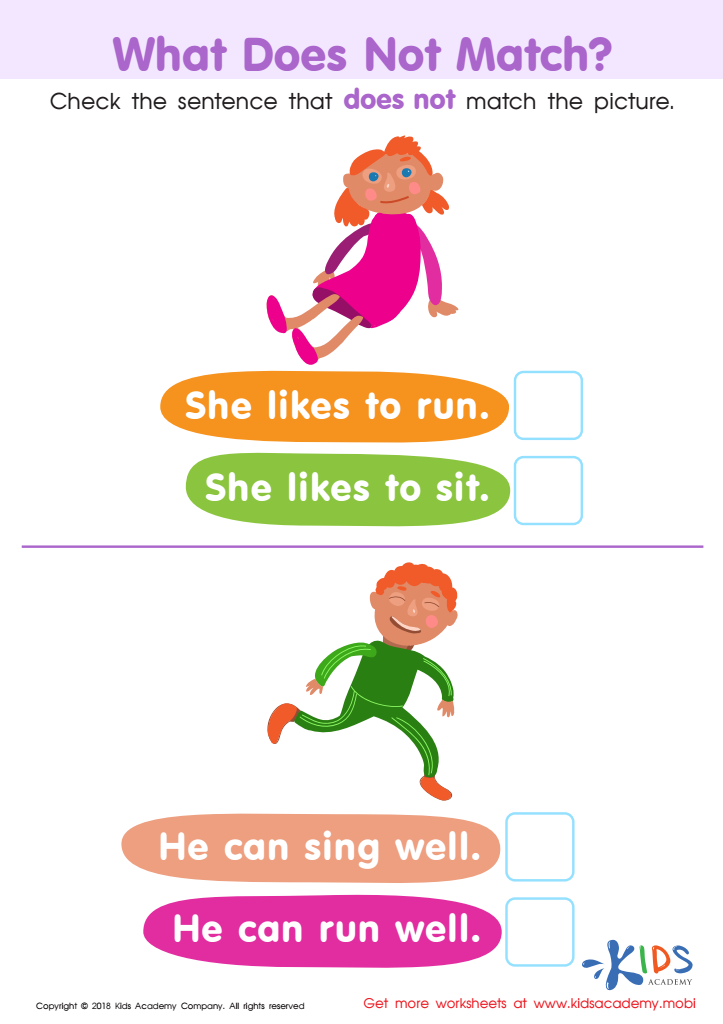

What Does Not Match? Worksheet
Visual discrimination is a crucial skill for young children, especially those aged 3-5 years. It refers to the ability to notice and compare the physical features of different objects, such as shape, size, color, and patterns. Parents and teachers should care about visual discrimination because it lays the foundation for later learning and development.
At this formative age, children are starting to recognize letters, numbers, and shapes—all of which are essential for early literacy and numeracy. When children can distinguish between similar-looking symbols or similar shapes, they are better equipped to learn to read and perform basic math tasks.
Moreover, developing visual discrimination skills can enhance a child’s problem-solving abilities and creativity. Activities like sorting objects, playing with puzzles, or engaging in art projects help strengthen these skills. As children become more adept at observing and analyzing their environment, they gain confidence and curiosity, which motivates learning.
Furthermore, fostering these skills at home and in the classroom promotes focused attention and cognitive development, crucial for future academic success. By prioritizing visual discrimination, parents and teachers contribute significantly to the holistic growth of young learners, setting them up for lifelong learning and exploration.
 Assign to My Students
Assign to My Students




